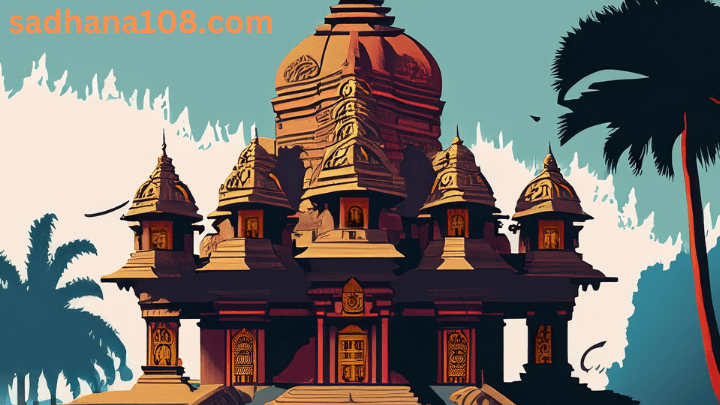Maha Shivaratri

Maha Shivaratri is a Hindu festival celebrated annually in honour of the god Shiva. There is a Shivaratri in every lunary month on its 13th night/14th day, but once a year in late winter (February/March) and before the arrival of spring, marks Maha Shivaratri which means "the Great Night of Shiva".
It is a major festival in Hinduism, but one that is solemn and marks a remembrance of "overcoming darkness and ignorance" in life and the world. It is observed by remembering Shiva and chanting prayers, fasting, doing Yoga and meditating on ethics and virtues such as self-restraint, honesty, noninjury to others, forgiveness and the discovery of Shiva. The ardent devotees keep awake all night. Others visit one of the Shiva temples or go on pilgrimage to Jyotirlingams. This is an ancient Hindu festival whose origin date is unknown.
According to Puranas, once the other two of the triads of Hindu Gods,Brahma and Vishnu were fighting over each other’s prowess.While Rudra or Shankara and Maheswara didn't felt Ego or Ahamkaram as they know 5 Divine functionalities (‘Panchakritya karmas’ ) are controlled by the power of Lord Shiva.As Bhagavan Shiva advised Brahma, Vishnu and Rudra and Maheshwara and Sadha Shiva to do divine functionalites (‘Panchakritya karmas’ ). They are essentially of the manifestations of His origin. They would carry out ‘Panchakritya’ or Five Duties viz.
- Srishti or Creation would be performed by Brahma,
- Sthithi or protection by Vishnu,
- Laya or destruction by Rudra;
- the fourth task, viz. Tirobhav would be performed by Mahesa (After destruction millions of souls will be protected which is Concealment and Revival) and
- Sadha Shiva will give ‘Anugraha’(Providing Salvation).finally the most significant task of Anugraha would be the exclusive dispensation by Himself.
But Brahma and Vishnu forgot the holy and supreme power and fought each other.By seeing the intensity of the battle, Lord Shiva assumed the form of a flaming Linga in between Brahma and Vishnu and challenged both of them by asking them to measure the gigantic Linga (phallic symbol of Lord Shiva).The place where lord Shiva manifested is Arunachala refers to the holy hill at Thiruvannamalai in Tamil Nadu. The hill is also known by the names Arunagiri, Annamalai Hill, Arunachalam, Arunai, Sonagiri and Sonachalam.
Awestruck by its magnitude, Brahma and Vishnu decided to find one end each to establish supremacy over the other. Lord Brahma took the form of a swan and went upwards while Lord Vishnu assumed the form of Varaha - a boar and went into the earth towards nether land. Both searched for thousands of miles but neither could find the end. On his journey upward, Brahma came across Ketaki flower. Exhausted and bewildered with his search to find the uppermost limit of fiery column, Brahma made Ketaki assent to lie that he had seen the top of the column where the flower had previously resided. Accompanied by his accomplice, Brahma confronted Vishnu and asserted that he had indeed discovered the origin of the cosmic column. At this point, the central part of the pillar split open and Shiva revealed himself in his full glory. Overawed, both Brahma and Vishnu bowed before him accepted lord Shiva’s supremacy. Lord Shiva also explained to Brahma and Vishnu that both of them were born out of him and that the three were then separated out into three different aspects of divinity.
However, Lord Shiva was angry with Brahma for making a false claim. The Lord cursed Brahma that no one would ever pray to him. (This legend explains why there is hardly any Brahma temple of significance in India.) Lord Shiva also punished the Ketaki flower for testifying falsely and banned her from being used as an offering for any worship.
While Lord Vishnu realized the mistake for it so vishnu got the boon that he will be equally beautiful as me (Shiva) but he too felt Ahamkaram as supreme (ego) so he did not supreme fame while Shankara or Rudra and Maheswara didn't felt ego or Ahamkaram SO Lord Shiva gave them boon that there fame and power will be equal to mine.They both will praised as equal as me.Since it was on the 14th day in the dark fortnight of the month of Phalguna that Shiva first manifested himself in the form of a Linga, the day is extremely auspicious and is celebrated as Mahashivaratri - the grand night of Shiva. To celebrate the occasion, devotees of Lord Shiva fast during the day and pray to the Lord throughout the night. It is said that worshipping of Lord Shiva on Shivaratri bestows one with happiness and prosperity.Unlike most Hindu festivals which are celebrated during the day, Maha Shivaratri is celebrated at night. The celebration includes maintaining a "jaagaran", an all-night vigil and prayers, because Shaiva Hindus mark this night as "overcoming darkness and ignorance" in one's life and the world through Shiva. Offerings of fruits, leaves, sweets and milk to Shiva are made, some perform all-day fasting with vedic or tantrik worship of Shiva, and some perform meditative Yoga. In Shiva temples, "Om Namah Shivaya", the sacred mantra of Shiva, is chanted through the day.
The legend of marriage of Shankara and Parvati is one the most important legends related to the festival of Mahashivaratri. The story tells us how Lord Shankara got married to Parvati, his divine consort. According to legend of Shankara and Shakti, the day Lord Shankara got married to Parvati is celebrated as Shivaratri - the Night of Lord Shiva.
Maha Shivaratri is celebrated over three or ten days based on the Hindu luni-solar calendar. Every lunar month, there is a Shivaratri (12 per year). The main festival is called Maha Shivaratri, or great Shivaratri, and this is on 13th night (waning moon) and 14th day of the month Phalguna (Magha). According to the Gregorian calendar, the day falls in either February or March.